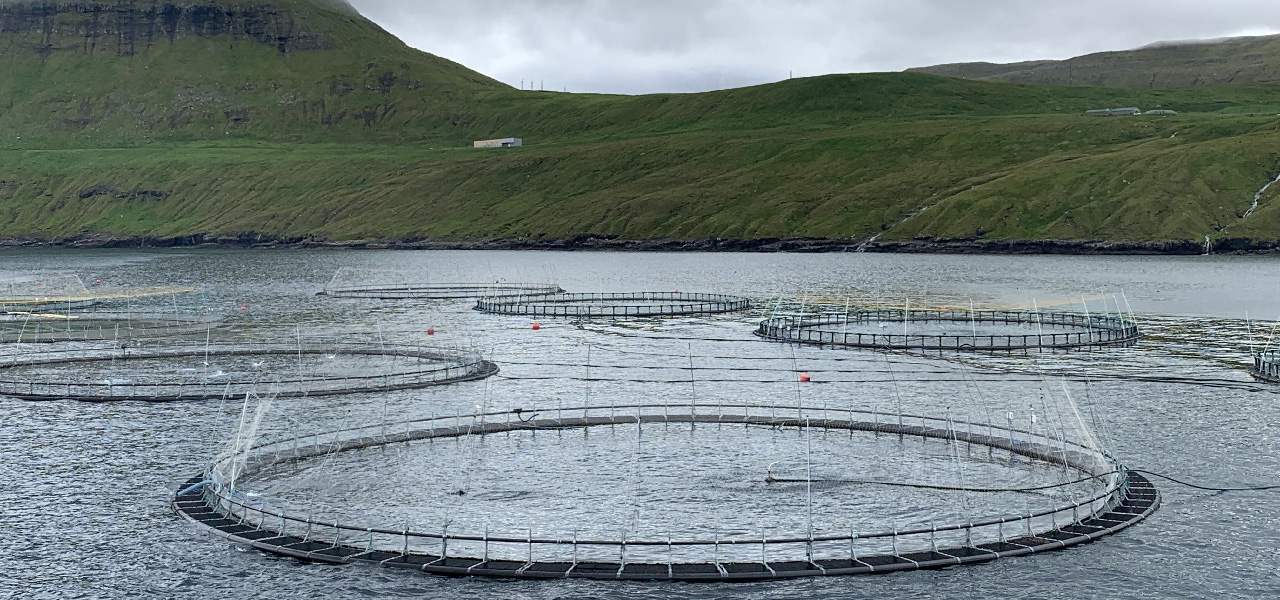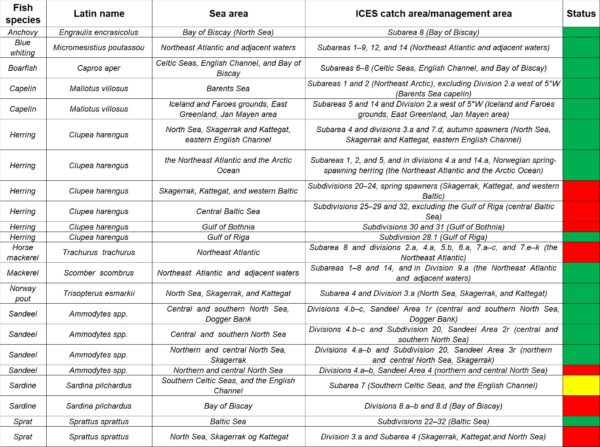
Resources
ICES status of fish stocks and ecosystem overviews
The International Council for the Exploration of the Sea (ICES) provides an annual overview of the status of the fish stocks in the Northeast Atlantic and Baltic Sea. ICES provides scientific advice to clients on fisheries and marine ecosystem issues. The clients are the EU, governments and international regulatory bodies that manage the North Atlantic Ocean and adjacent seas.
An overview of the latest status of important pelagic fish stocks for fishmeal and fish oil production is shown in the Table below. Detailed information for each fish stock is given in an Excel sheet – Click here
Names of Sub-areas and Divisions of FAO fishing area 27 – see maps of the North-East Atlantic (here) and the Baltic Sea (here).
The fish stock status in the Table is indicated by the colors – green, yellow and red:
Green = spawning stock biomass above the precautionary reference point, Bpa.
Yellow = spawning stock biomass unknown or in transition.
Red = spawning stock biomass below the precautionary reference point, Bpa.

ICES latest advice – here
ICES fisheries overviews – here
ICES ecosystem overviews – here
ICES ecoregions and advisory areas – here
From Fisheries Overviews – Greater North Sea Ecoregion (here):
Around 6600 fishing vessels are active in the Greater North Sea. Total landings peaked in the 1970s at 4 million tonnes and have since declined to about 2 million tonnes.
The fisheries of the Greater North Sea boast a rich tapestry of species, spanning pelagic, demersal, benthic (including flatfish), crustaceans, and elasmobranchs.
Historical Trends:
Throughout the 20th century, total landings from the Greater North Sea experienced notable fluctuations. From the 1950s, landings ranged between 2 and 3 million tonnes, before surging to between 3 and 4 million tonnes by the late 1960s. This increase was largely driven by substantial catches of pelagic species like mackerel and herring, alongside demersal species such as cod and haddock.
Challenges and Decline:
However, post-1995, total landings declined, plummeting to a low of 1.4 million tonnes in 2012. This downturn can be attributed to several factors, including Climate change, reduced productivity of key stocks and historical overfishing from the years before. Nonetheless, it also reflects proactive efforts to curb fishing mortality, with successful initiatives implemented to restore stocks to more sustainable levels after 2000.
Charting a Sustainable Future:
The decline in total landings underscores the complex interplay between ecological dynamics and human activity in the Greater North Sea. Moving forward, continued vigilance and adaptive management strategies will be crucial in ensuring the long-term health and resilience of these marine ecosystems.

